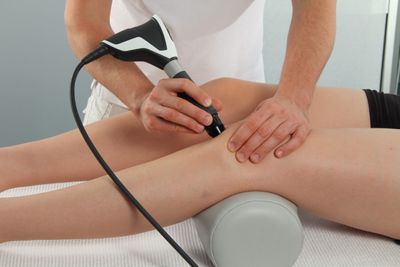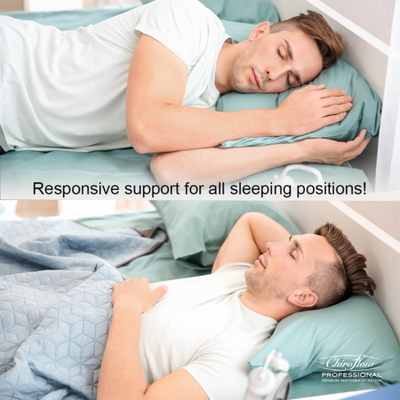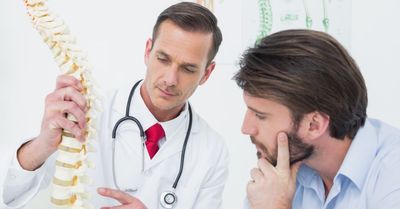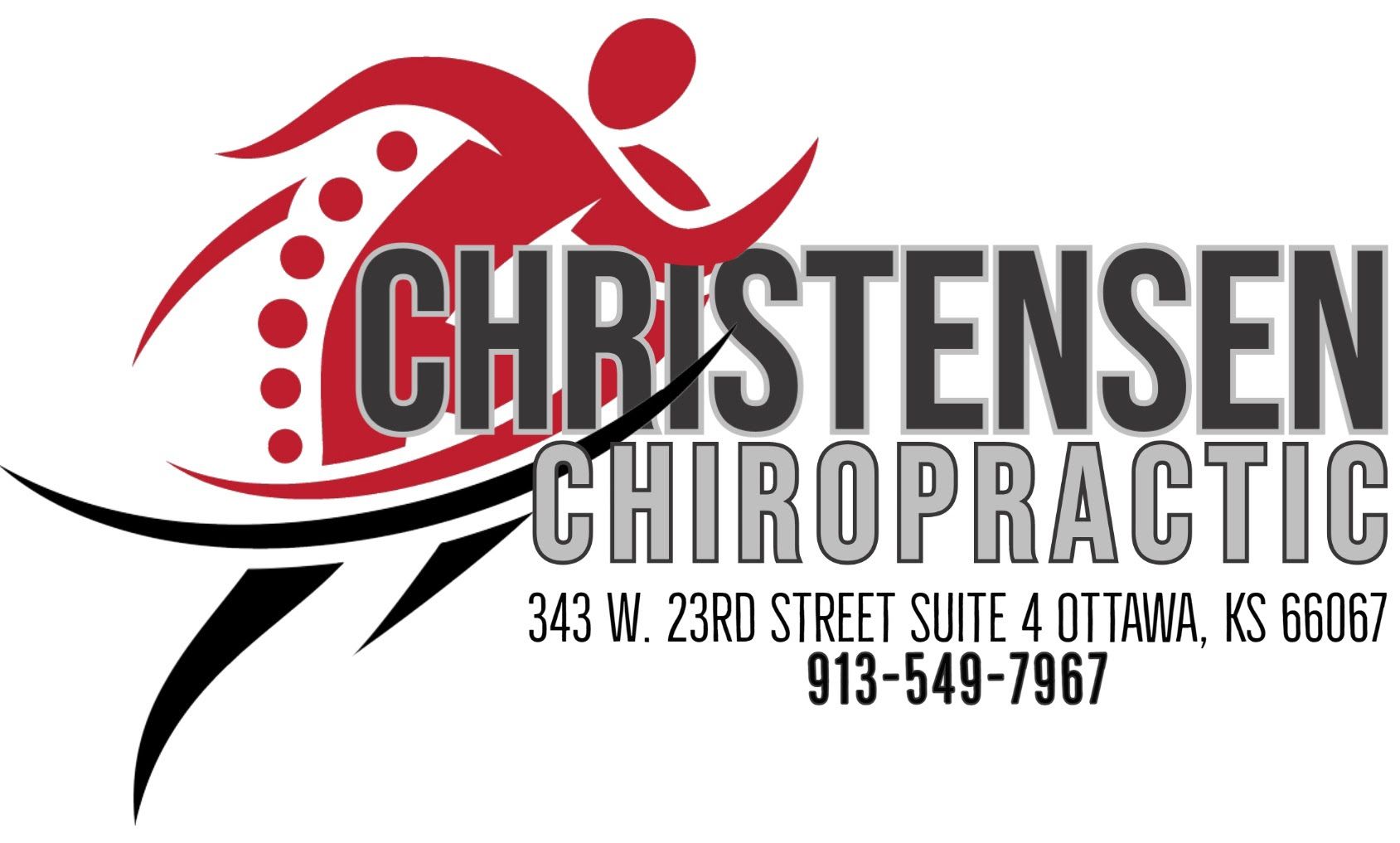Blog

Maintaining Health Through Chiropractic Care
At Christensen Chiropractic, where we believe that good health isn’t just a goal — it’s a lifestyle. Whether you’re a long-time advocate of chiropractic care or someone curious about its benefits, we’re here to guide you on your journey to a healthier, pain-free life. For premier chiropractic care in Ottawa, schedule an appointment with us today!
The Foundation of Chiropractic Care
At its core, chiropractic care is all about maintaining the health of your spine and nervous system. Think of your spine as the superhighway of your body, carrying essential messages between your brain and every other part of your body. When this highway is clear and free from obstacles, your body functions at its best. However, if there are roadblocks — like misalignments or subluxations — those messages can get distorted, leading to pain, discomfort, and various health issues.
Why Choose Chiropractic Care?
Natural and Non-Invasive: Chiropractic care focuses on natural healing without relying on medications or invasive procedures. It’s all about helping your body heal itself.
Holistic Approach: We don’t just treat symptoms; we address the root cause of your discomfort. Our goal is to promote overall wellness, not just temporary relief.
Personalized Care: At Tanner Christensen Chiropractic, we understand that everyone’s body is unique. Our care plans are tailored to meet your specific needs and health goals.
Improved Quality of Life: Regular chiropractic care can enhance your overall well-being. From better sleep and increased energy to reduced stress and improved mobility, the benefits are numerous.
Tips for Maintaining Health Between Adjustments
While regular visits to your chiropractor are essential, there are plenty of ways to support your spinal health between appointments:
Stay Active: Incorporate regular exercise into your routine. Activities like walking, swimming, and yoga can keep your spine flexible and strong.
Mind Your Posture: Be conscious of your posture, especially if you spend a lot of time sitting. Simple adjustments, like sitting up straight and taking breaks to stretch, can make a big difference.
Hydrate and Nourish: Drink plenty of water and eat a balanced diet rich in nutrients. Proper hydration and nutrition support overall health, including the health of your spine.
Listen to Your Body: Pay attention to any signs of discomfort or pain. Don’t ignore them – address them early with the help of your chiropractor.
Join the Journey to Better Health
At Christensen Chiropractic in Ottawa, we’re more than just a clinic — we’re your partners in health. Whether you’re dealing with chronic pain, recovering from an injury, or simply looking to improve your overall well-being, we’re here to help you every step of the way. Book an appointment with us today and take the first step toward a pain-free, vibrant life.
Stay healthy, stay happy, and remember: your spine’s best friend is just a call away!

Shock Wave Therapy
Dr. Tanner Christensen
Shockwave therapy, also known as Extracorporeal Shockwave Therapy (ESWT), is a non-invasive medical procedure that utilizes acoustic shockwaves to treat a variety of musculoskeletal conditions. This therapy has been gaining popularity in recent years as an effective treatment for chronic pain and injury. In this blog, we will explore what shockwave therapy is, how it works, and the conditions it can treat.
What is shockwave therapy?
Shockwave therapy is a non-invasive treatment that utilizes high-energy sound waves to stimulate the body's natural healing process. The sound waves are delivered through a hand-held device that is placed over the affected area. The shockwaves are believed to increase blood flow to the injured area, stimulate cell regeneration, and promote the formation of new blood vessels.
How does shockwave therapy work?
Shockwave therapy works by stimulating the body's natural healing process. When the high-energy sound waves are delivered to the affected area, they create a microtrauma that triggers the body's healing response. This response includes an increase in blood flow to the injured area, the release of growth factors, and the stimulation of stem cell activity.
The increased blood flow to the injured area helps to reduce inflammation and promote healing. The growth factors released during the healing process help to regenerate damaged tissue and promote the formation of new blood vessels. The stimulation of stem cell activity can also help to promote tissue regeneration.
What conditions can shockwave therapy treat?
Shockwave therapy has been found to be effective in treating a variety of musculoskeletal conditions, including:
- Plantar fasciitis
- Achilles tendonitis
- Tennis elbow
- Golfers elbow
- Rotator cuff tendonitis
- Frozen shoulder
- Hip pain
- Knee pain
- Chronic neck and back pain
- Non-healing fractures
Is shockwave therapy safe?
Shockwave therapy is a non-invasive and safe treatment option for most patients. It has been used for many years to treat a variety of conditions with no significant side effects. However, as with any medical procedure, there may be some risks associated with the treatment. Patients should always discuss the potential risks and benefits of shockwave therapy with their healthcare provider before undergoing treatment.
Conclusion
Shockwave therapy is a non-invasive treatment option that utilizes high-energy sound waves to stimulate the body's natural healing process. It has been found to be effective in treating a variety of musculoskeletal conditions, including plantar fasciitis, Achilles tendonitis, tennis elbow, and frozen shoulder. While shockwave therapy is generally safe, patients should always discuss the potential risks and benefits with their healthcare provider before undergoing treatment. If you are experiencing chronic pain or injury, shockwave therapy may be an effective treatment option for you.

The Joy of Being Unconscious
Dr. Tanner Christensen
Every night, we drift off into unconsciousness. At this time, our bodies are resting and making repairs.
But that’s hard to do if we’re tossing and turning and not getting enough sleep.
Your pillow may be at fault.
Does your current pillow support the curve of your neck?
Is it too fluffy?
Has it seen better days?
It might be time to upgrade to a chiropractor-recommended pillow.
At Christensen Chiropractic we sell the ChiroFlow Water Pillow. This pillow is an easy to fill water base pillow technology that automatically responds to head movement as you sleep through the night, providing cervical support all night long. Everyone has different levels of support that they need and the Chiroflow pillow accommodates everyone by allowing you to put as much water in the pillow as you need.
A recent study
Logan College of Chiropractic conducted two separate clinical studies. The first of the two studies conducted sought the evaluation of Chiroflow® Waterbase® pillow and its satisfaction among asymptomatic subjects. Asymptomatic subjects can be described as ones that do not show or exhibit any sleep disorders or suffer from chronic pain issues, making this study’s objective to see if the “regular” sleepers showed improved quality of sleep.
The study included 104 subjects and required they sleep on the Chiroflow® pillow and record their results. Based on the results they reported, Logan College found that 68.3% of the subjects found sleeping with the Chiroflow® pillow improved their quality of sleep over their usual pillow. Of the 104 subjects it was also reported that after the study completed, 90.4% of the subjects would continue the use of the Chiroflow pillow. Logan College subsequently reported that the use of the Chiroflow® pillow was associated with enhanced quality of sleep-in asymptomatic subjects.
Next time you’re in, ask for a test drive.
Christensen Chiropractic

Migraine & Headache Sufferers!
Dr. Tanner Christensen
Headache Sufferers- Listen Up!
There are many different types of headaches, but one of the more common, and often debilitating, is a migraine headache. A migraine headache is usually an intense, throbbing pain on one, or sometimes, both sides of the head. Most people with migraine headache feel the pain in the temples or behind one eye or ear, although any part of the head can be involved. Besides pain, migraine also can cause nausea and vomiting and sensitivity to light and sound. Some people also may see spots or flashing lights or have a temporary loss of vision. Migraine can occur any time of the day, though it often starts in the morning. The pain can last a few hours or up to one or two days. Some people get migraines once or twice a week. Others, only once or twice a year.
Here are some tips to help you from being one of the 29.5 million Americans who will experience a migraine this year:
Eat at regular intervals. Hunger is a migraine trigger. Avoid known food triggers, including chocolate, alcohol/wine/beer, dairy products, citrus, fried foods, pork, onions, tea/coffee and seafood. Foods that contain nitrates, MSG or aspartame
(NutraSweet) can trigger migraines.
Stay well hydrated with 6-8 glasses of water each day. Avoid caffeinated beverages.
Eat a diet rich in antioxidants and omega 3 fats.
Sleep 6-8 hours each night. Migraines have been linked to lack of sleep as well as excessive sleep.
Avoid strong odors like room deodorizers, perfume and smoke.
Avoid spending time in rooms with fluorescent lighting or near computer monitors that flicker. Avoid glare. Have your eyes checked regularly by an optometrist to minimize the effects of eye strain. When using computer monitors, consider antiglare screens and proper lighting. Newer LCD and Plasma screens minimize flicker.
Avoid frequent use of over-the-counter medications as these have been shown to increase the likelihood of progressively more frequent “rebound headaches”.
If you suffer from headaches, we may be able to help. Chiropractic care is a proven treatment for many types of headaches including migraines. And our convenient hours and affordable fees won’t leave you with any other type of headache! Call us today at 913-549-7967, to see if we can help you.

What is Chiropractic?
Dr. Tanner Christensen
Well first let us talk about what it takes to become a chiropractor. To get into chiropractic school, you have to have your pre-requisites done which most get a bachelor’s degree in some kind of pre-health field like biology, kinesiology, chemistry, and etc. After you have this done then you can apply and most chiropractic schools have you submit your transcript and then you usually have to write an essay on why you want to attend. Then after you have been accepted into the program it usually takes 3 ½ to 4 yrs to complete the program. Most chiropractic programs have a 10-trimester program, and a trimester lasts about 3 to 4 months, so you have 3 trimesters in a yr. Each trimester a student takes around 25-28 credit hrs of classes. Over the 4 yr program a student can have taken up to 300 credit hrs or more. During the first 1-2 yrs classes focus on the basic sciences like human anatomy, cell phys, microbiology, neurology, biochemistry, etc. Also, during that time students are in technique classes learning how to adjust and feel the motion of the spine. After the first 1-2 yrs the program gets into more of the diagnostic material and how to perform exams and treat certain conditions. For example, physical diagnosis, Musculoskeletal diagnosis, pediatrics, geriatrics, X-ray imaging and case management. At Cleveland Chiropractic College by the time you get to Trimester 7 you enter in the student clinic where you work on students and adjust them and perform physicals in the student clinic. At Cleveland in the middle of Trimester 8 if you have done all your requirements and hit your numbers to move on you get to now treat patients in the Outpatient clinic located at Cleveland Chiropractic College.
Now that I have explained what is required to become a chiropractor, I will talk about what chiropractic is and what a chiropractor does because some can be confused on what it is they do because they have never been to one before or they heard a rumor about it from someone. Chiropractic is a health profession that focuses on treating musculoskeletal conditions by affecting the nervous system, muscles, and other organs. Chiropractic does focus on a drug free and hands on approach ( this does not mean we hate drugs, but we leave that expertise to pharmacologists and medical doctors, I believe all health professionals need to work together and I have great respect for MD’s, PT’s, Dentists, and other health professionals). As you may have heard chiropractors treat back pain and neck pain. You may have heard them called the “spine doctor” or “back cracker”, but a chiropractic is so much more than that. Chiropractic can help treat other conditions like carpel tunnel, knee meniscus injury, ankle sprain, sciatica, plantar fasciitis, or they may treat an athlete to help them stay injury free and help them perform better. Also, many chiropractors have knowledge and know about nutrition and can give nutritional and some exercise advice.
So, let us talk about what a typical daily encounter may be like for a new patient coming into our chiropractic office for your typical low back pain. First you will have to fill out a health history report so that I know your whole health history and can manage your treatment based on what I know. When you come in, I will ask you some questions about what caused your back pain, how bad it hurts, what movements make it hurt, what makes it better, and so on. Then I will run through some orthopedic tests to find out what is causing your back pain whether it is your muscles, your joints in your spine, or if it is below your back and a weakness in your hips. I may also do some physical exams like checking your heart, abdomen, and other things to rule out any contraindications to adjusting and make sure an organ is not causing a referral pain to your back. After all of that I will explain to you what I found and most likely will start treatment.
Let us talk about what an adjustment is and what a chiropractor is looking for when they are feeling your spine. First when a patient comes into our clinic, I feel for tight muscles, restricted motions in the spine, and any postural abnormalities. So when chiropractors adjust or do manipulation is another term used they look for “subluxations” this word is debated among different health professionals, but to me I look for areas that don’t move well in your spine that should have movement. When I find a spot that does not move well, I will give a quick “thrust” that will put motion into that spot that was not moving. This is called an “adjustment or manipulation” and is safe and usually feels good. Sometimes you may hear a “cracking” sound, this is not your bones breaking LOL, but it is gas that is releasing the joint. It is just like when someone will pop their knuckles. Along with adjustments I use different techniques to help release those tight muscles and get you moving better. Also, I may send you home with some exercises and stretches to help speed up your recovery and keep you healthy.
I hope that this blog better informed you about what chiropractic is and what chiropractors do. If you have any questions or comments please send them my way, I would be happy to answer them.
Thanks for Reading!

Seven Tips For Making Exercise Fun!
Dr. Tanner Christensen
Does exercise have to be boring or painful? No! Here are 7 helpful tips for making your physical activities fun.
Tip #1: Find a workout buddy. Sharing your fitness goals with someone else can be a great source of motivation. You can rely on each other for support and encouragement. A workout buddy can also make time go by more quickly when you are doing an activity.
Tip #2: Don’t get discouraged. Positive physical changes from exercise do not become noticeable right away. Everyone’s body reacts to exercise differently. It can take weeks or months before you see changes. Don’t get discouraged. Any moderate activity has many benefits to your health, even if you can’t see it right away. In time, you will reach your fitness goals if you keep following your fitness program.
Tip #3: Don’t give up. You will always have barriers and challenges when starting something new. Realize that everyone becomes busy or loses motivation from time to time. Simply make changes as needed. And remember that taking a break from your routine every now and then is OK, as long as you continue to lead an active life.
Tip #4: Exercise during a comfortable time of day. Don't work out too soon after eating or when it's too hot or cold outside. If you're too stiff in the morning, schedule your workout for later in the day. Exercising in the evening is OK, as long as you finish at least 2 to 3 hours before going to sleep
Tip #5: Forget “no pain, no gain.” While a little soreness is normal when you first start exercising, pain isn’t. Stop exercising if you hurt. Call your doctor if you experience nausea, shortness of breath, dizziness or lightheadedness, headache, or any type of pain, pressure, or cramping.
Tip #6: Choose fun activities. The activities you choose to do don’t have to take place in a gym or fitness club. They can include playing sports, doing household chores, or playing with your children or grandchildren. Read a book, listen to music, or watch television while riding a stationary bike. Walk at the zoo or a park. Go dancing. Or learn how to play tennis. Be sure the activities you choose meet your physical needs too. For example, if you have arthritis, you may find that you enjoy swimming more than running.
Tip #7: Change your routine. Changing your routine from week to week can help keep your program fun and interesting. It can also help your body stay challenged by working different muscles. Try a new activity each week. Or rotate a few exercises to keep boredom away. Switching between exercises and types of activity may also lower your risk of injury. Walk one day and bicycle the next. Even household chores such as shoveling snow, gardening, or cleaning are good workouts.
This information is not intended to take the place of regular medical care or advice. Please check with your doctor before using this information or beginning any self-care program.
If you wanna know more about what exercise could benefit you specifically or need help getting out of pain so you can exercise again, give Tanner Christensen Chiropractic a Call Today!

Welcome to Our Blog!
Welcome to Christensen Chiropractic’s blog! This is just the beginning of a series of informative posts to help you and your chiropractic needs. In the future, we will cover a broad spectrum of the chiropractic world. Since we offer many services here at Tanner Christensen Chiropractic, we will have a lot to talk about and cover. We will talk about these throughout this blog post.
Services:
The first thing we’re going to cover is the services that we provide here at Christensen Chiropractic. A chiropractor can do a lot more than just crack your back, we offer a diverse selection of services. These include:
- Chiropractic Adjustment
- Muscle Therapy / Sports Massage
- Sports Physicals
- Spinal Decompression
- Rehab Therapy
The services that we provide are extraordinary and we prove that we’re on a mission to take care of you. Leave pain and stiffness behind!
Like mentioned before, we are going to cover a lot on the blogs that we plan on posting here in the next few months. Let’s talk about some of the topics we plan on covering.
Blog Categories
We’re going to have a majority of our blogs revolve around helpful resources. After all, helping is what chiropractors are here to do. Some of these topics include:
- Benefits of Going to the Chiropractor
- How to Find a Good Chiropractor
- Why Good Posture is Important
- Why Athletes Should Go to the Chiropractor
- Conditions That Chiropractors Can Fix
- Chiropractic Treatment for Neck Pain: What to Expect
This is a general overview of the helpful resources we plan on covering over the next few months.
We also plan on covering other topics throughout our blogging journey. For example, we plan on making a History of Chiropractors blog so everybody knows where this medicine practice came from.
We’re are very excited to kick off our blog journey and to help inform the public about their chiropractic needs! If you have any other questions, please feel free to contact us! If you are interested in our chiropractic services, fill out our new patient form.
